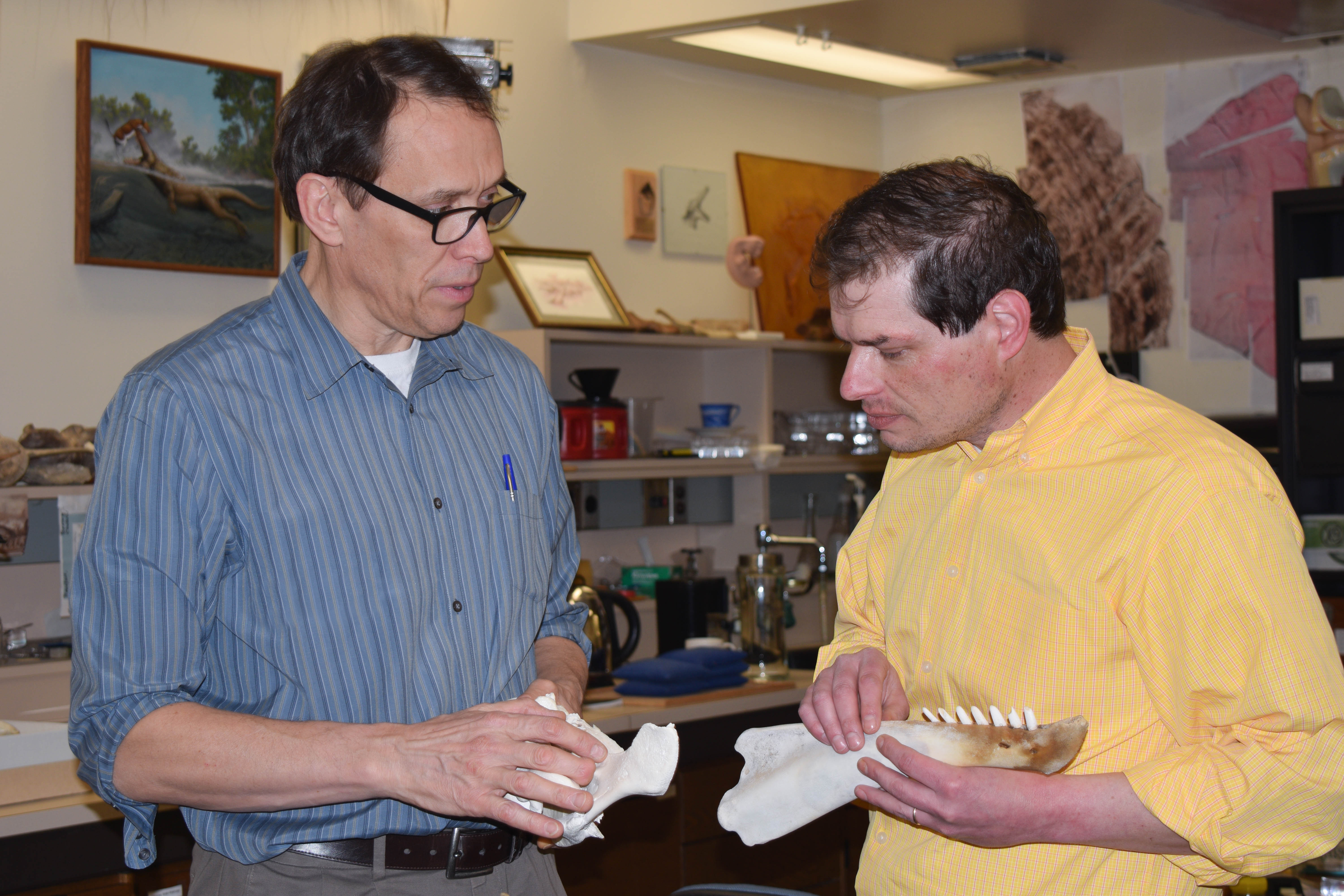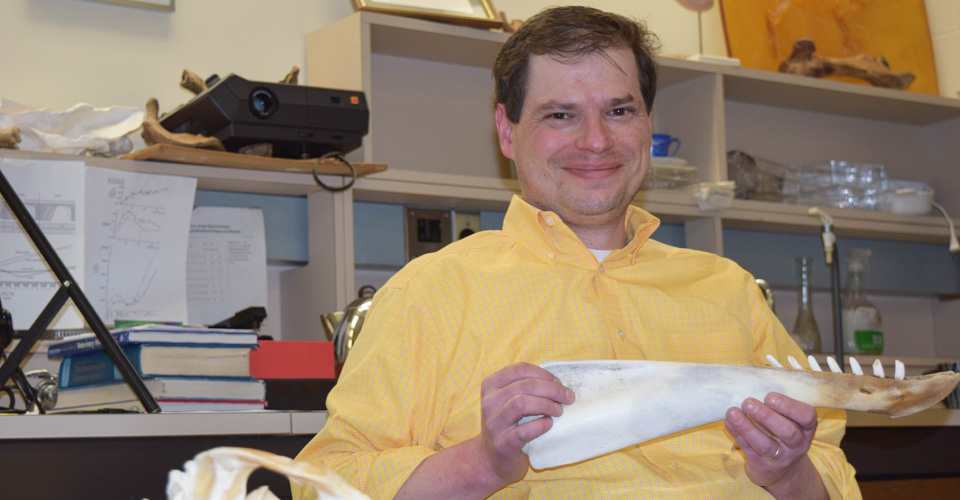Persistence with a finicky silver stain was key to a whale research breakthrough.
Beluga whales live in the Arctic, always close to the ice that floats on the ocean—a habitat threatened by environmental change. To know if the beluga population will grow or shrink in the future, it is necessary to know how many animals there are, as well as their age. There are no birth registers for belugas, but David A. Waugh, Ph.D., a postdoctoral researcher in the lab of Hans Thewissen, Ph.D., Ingalls Brown Chair of Anatomy in the Department of Anatomy and Neurobiology (shown in photo below with Waugh), has discovered that their teeth are an accurate way to determine their age.
Since the 1950s, scientists have relied on growth layers to estimate the age of toothed whales, but Waugh and his collaborators applied a new technique (repurposing a stain that is often used to test brain tissue for signs of Alzheimer’s disease) to stain daily growth layers in whale teeth, allowing them to settle a long-standing controversy regarding how to estimate the age of beluga whales.
Waugh and Thewissen work with Robert S. Suydam of North Slope Borough, Department of Wildlife Management, Barrow, Alaska, and Joseph D. Ortiz, Ph.D., professor in the Department of Geology at Kent State University. A paper about the research has been published by the journal PLOS-One, a peer-reviewed, open-access online scientific journal.

Tracking the growth
The teeth of some whales, such as belugas and sperm whales, grow a bit every year. This leaves a record much like tree rings. Unlike trees, beluga teeth do not just show yearly growth layers, but also daily ones. While Dr. Waugh uses CT-scanning to see through the tooth, the scanner is not powerful enough to clearly image the yearly (let alone daily) growth layers. To make those layers visible, Dr. Waugh cuts thin slices out of the teeth and colors them with a metallic silver stain. Dr. Waugh says, “It took forever to get that method working well. The silver solutions are very finicky and will happily deposit themselves on the glass jars if they are not absolutely clean. I was turning glass jars into mirrors with the silver at an alarming rate. But after many failed attempts, I got the silver to stick to the teeth, and not the glass jars, and the results were amazing.”
Dr. Thewissen has had a decade-long research program on Arctic whales. When Dr. Waugh joined the lab, he brought with him an array of new sophisticated techniques. Says Thewissen, “Nobody had been able to image daily growth lines in whale teeth, but David succeeded at that marvelously, by being meticulous and persistent. This method not only allows us to learn how belugas will respond to changes in the Arctic, but we can also use it to look at fossil teeth. Imagine, we might be able to say how long a whale had lived when it died 15 million years ago.”
The inaugural university-wide NEOMED Research Forum, hosted by the Office of Research and Sponsored Programs, will be held March 20 at 4 p.m. in Regula Training Room 106.
